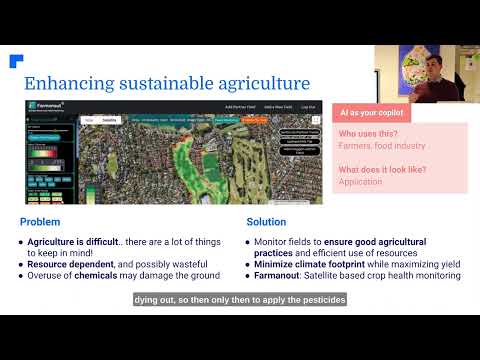US Climate Policy Shift: $4 Billion GCF Pledge Canceled – Impact on Global Climate Finance
“The US cancellation of $4 billion in Green Climate Fund contributions impacts global climate finance and developing nations’ adaptation efforts.”
In the ever-evolving landscape of global climate policy, we find ourselves at a critical juncture. On February 10, 2023, the United States made a significant announcement that sent ripples through the international community. The State Department revealed the cancellation of approximately $4 billion in promised contributions to the United Nations’ Green Climate Fund (GCF). This decision marks a stark departure from previous administrations’ commitments and raises profound questions about the future of climate finance and global cooperation in addressing the climate crisis.
As we delve into this complex issue, we’ll explore the implications of this policy shift, its impact on developing countries, and the broader context of climate diplomacy. Our analysis will cover the intricacies of climate finance policy, the role of the Green Climate Fund, and the challenges that lie ahead for global climate action.
Understanding the Green Climate Fund and Its Significance
The Green Climate Fund, established in 2010, stands as a cornerstone of international climate finance. Its primary mission is to support developing countries in their efforts to mitigate and adapt to climate change. By channeling funds from developed nations to those most vulnerable to climate impacts, the GCF plays a crucial role in realizing the goals of the Paris Agreement and fostering global climate resilience.

Key aspects of the GCF include:
- Initial capitalization of $10.3 billion in 2015
- Subsequent replenishment rounds bringing total funds to over $20 billion
- Approval of nearly $16 billion for projects across more than 130 countries
- Focus on climate-friendly agricultural practices, reforestation, and coastal protection
The GCF’s work is particularly vital for developing nations that often lack the resources to implement large-scale climate adaptation and mitigation projects. By providing financial support, the fund helps bridge the gap between climate ambitions and on-the-ground action.
The US Pledge Cancellation: A Closer Look
The recent decision by the United States to cancel $4 billion in pledged contributions to the GCF represents a significant shift in climate finance policy. This move is part of a broader realignment of US climate policy under the current administration. To understand the full impact of this decision, we need to examine its context and implications:
- Previous US administrations had collectively pledged around $6 billion to the GCF
- Only about $2 billion had been delivered prior to the cancellation
- The most recent commitment was made during the COP 28 climate talks in Dubai
- The cancellation is part of a wider strategy that includes withdrawal from the Paris Agreement
This policy shift raises concerns about US leadership in global climate diplomacy and its commitment to international climate agreements. Secretary of State Marco Rubio’s affirmation of a halt to US engagement in climate talks further underscores the magnitude of this change.
Impact on Developing Countries and Climate Projects
The cancellation of the US pledge has far-reaching consequences, particularly for developing nations that rely on GCF support for their climate initiatives. Here’s how this decision affects various aspects of global climate action:
1. Climate Adaptation Efforts
Developing countries often face the brunt of climate change impacts, from rising sea levels to extreme weather events. GCF funding is crucial for implementing adaptation measures such as:
- Flood defense systems
- Drought-resistant agriculture
- Early warning systems for natural disasters
With reduced funding, many of these projects may face delays or cancellations, leaving vulnerable communities at greater risk.
2. Renewable Energy Initiatives
The transition to clean energy is a key component of climate mitigation. GCF support has been instrumental in:
- Financing solar and wind projects in developing nations
- Supporting energy-efficient infrastructure development
- Facilitating technology transfer for renewable energy solutions
The funding shortfall may slow down this crucial transition, potentially locking some countries into more carbon-intensive development paths.
3. Sustainable Agriculture and Forestry
GCF projects often focus on sustainable land use practices, including:
- Reforestation and afforestation initiatives
- Climate-smart agriculture techniques
- Conservation of biodiversity hotspots
These projects not only contribute to climate mitigation but also support local livelihoods and ecosystem health. The funding cut may jeopardize ongoing and planned initiatives in this sector.
Global Climate Diplomacy: Shifting Dynamics
The US decision to withdraw from its GCF pledge has implications beyond financial considerations. It signals a shift in global climate diplomacy and raises questions about the collective ability to address climate change. Key aspects to consider include:
- Trust and cooperation among nations in climate negotiations
- The role of developed countries in supporting climate action globally
- The future of international climate agreements and commitments
This policy change may prompt other nations to reassess their commitments and could potentially lead to a domino effect in climate finance withdrawals.
The Road Ahead: Challenges and Opportunities
“COP climate talks aim to mobilize $300 billion annually for developing countries’ climate resilience by 2035.”
Despite the setback from the US pledge cancellation, the international community continues to push forward with ambitious climate goals. The recent COP 29 meeting in Baku set a new collective target for climate finance:
- Aim to mobilize a minimum of $300 billion annually for developing nations by 2035
- Build upon the previous commitment of $100 billion per year from 2020 to 2025
- Explore diverse funding sources, including public, private, bilateral, and multilateral resources
These targets underscore the growing recognition of the scale of investment needed to address the climate crisis effectively. However, achieving these goals will require innovative approaches and renewed commitment from the global community.

The Role of Technology in Climate Resilience
As we navigate the challenges posed by climate change and shifting political landscapes, technology emerges as a crucial tool in building climate resilience. Innovative solutions can help bridge the gap left by funding shortfalls and empower communities to adapt to changing environmental conditions.
One such technological solution is offered by Farmonaut, a pioneering agricultural technology company. Farmonaut’s platform provides valuable services such as real-time crop health monitoring, AI-based advisory systems, and resource management tools. These technologies can help farmers in developing countries optimize their practices, reduce resource wastage, and adapt to changing climate conditions.
Key features of Farmonaut’s technology include:
- Satellite-based crop health monitoring
- AI-driven personalized farm advisory
- Blockchain-based product traceability
- Carbon footprint tracking for agribusinesses
By leveraging such technologies, developing nations can enhance their agricultural resilience and sustainability, even in the face of reduced international climate finance.
Reimagining Climate Finance: Alternative Approaches
The cancellation of the US pledge to the GCF highlights the need for more diverse and resilient sources of climate finance. As we look to the future, several alternative approaches are gaining traction:
1. Green Bonds and Climate Bonds
These financial instruments allow governments and corporations to raise funds specifically for climate-related projects. The global green bond market has seen significant growth in recent years, offering a promising avenue for climate finance.
2. Public-Private Partnerships
Collaborations between governments, private sector entities, and international organizations can leverage diverse resources and expertise to implement climate projects.
3. Climate-Focused Development Banks
Specialized financial institutions dedicated to funding climate initiatives can play a crucial role in channeling resources to where they’re needed most.
4. Carbon Markets and Pricing Mechanisms
Well-designed carbon pricing systems can generate revenue for climate projects while incentivizing emissions reductions across sectors.
The Path Forward: Building Resilience and Sustainability
As we confront the challenges posed by the US withdrawal from its GCF pledge, it’s clear that the global community must adapt and innovate to maintain momentum in climate action. Here are key strategies for moving forward:
1. Strengthening Regional Cooperation
Developing countries can form regional alliances to pool resources, share best practices, and implement cross-border climate initiatives. This approach can help maximize the impact of available funding and foster knowledge exchange.
2. Enhancing Capacity Building
Investing in local expertise and institutional capacity is crucial for long-term climate resilience. This includes training programs, technology transfer, and support for indigenous knowledge systems.
3. Mainstreaming Climate Considerations
Integrating climate adaptation and mitigation into all aspects of development planning can help ensure that even with limited dedicated climate finance, progress continues across sectors.
4. Leveraging Digital Technologies
Embracing digital solutions, such as those offered by Farmonaut, can enhance climate resilience in sectors like agriculture. These technologies provide valuable data and insights that can inform decision-making and resource allocation.
Explore Farmonaut’s API for advanced agricultural insights
The Role of Non-State Actors in Climate Finance
With the shift in US climate policy, the role of non-state actors in climate finance becomes increasingly important. These entities, including NGOs, foundations, and private sector companies, can help fill the gap left by reduced government contributions:
- Philanthropic organizations can direct funds to climate-related causes
- Corporate sustainability initiatives can drive private sector investment in climate solutions
- Civil society organizations can mobilize grassroots support and implement community-level projects
By diversifying the sources of climate finance, we can build a more resilient and adaptable system that’s less vulnerable to policy shifts in individual countries.
Global Climate Finance Impact Analysis
| Impact Area | Pre-Cancellation Estimate | Post-Cancellation Estimate | Percentage Change |
|---|---|---|---|
| Total GCF Funding Available | $20 billion | $16 billion | -20% |
| Developing Countries’ Adaptation Projects | 500 projects | 400 projects | -20% |
| Renewable Energy Initiatives | 200 initiatives | 160 initiatives | -20% |
| Reforestation Efforts | 1 million hectares | 800,000 hectares | -20% |
The Importance of Continued International Engagement
Despite the challenges posed by the US withdrawal from its GCF pledge, it’s crucial to maintain and strengthen international cooperation on climate change. The global nature of the climate crisis demands collective action and shared responsibility. Key areas for continued engagement include:
- Honoring existing commitments under the Paris Agreement
- Participating in international climate negotiations and forums
- Sharing scientific knowledge and technological innovations
- Supporting capacity-building initiatives in developing countries
By maintaining open channels of communication and collaboration, the international community can work towards common goals and find innovative solutions to climate challenges.
Access Farmonaut’s API Developer Docs for integration guidance
The Role of Agriculture in Climate Resilience
Agriculture is both significantly impacted by climate change and a key sector for implementing climate solutions. As we navigate the challenges of reduced climate finance, it’s crucial to focus on sustainable and resilient agricultural practices. Farmonaut’s technology offers valuable tools in this regard:
- Precision agriculture techniques that optimize resource use
- Early detection of crop health issues to prevent losses
- Data-driven decision-making for improved farm management
By adopting such technologies, farmers in developing countries can enhance their resilience to climate impacts and contribute to mitigation efforts through more sustainable practices.
Looking Ahead: The Future of Climate Finance
As we move forward, it’s clear that the landscape of climate finance is evolving. While the US withdrawal from its GCF pledge presents challenges, it also opens up opportunities for innovation and diversification in funding sources. Key trends to watch include:
- The growing role of private sector investment in climate solutions
- Increased focus on climate risk assessment in financial decision-making
- The emergence of new financial instruments tailored to climate projects
- Greater emphasis on local and community-led climate initiatives
By adapting to these changes and embracing new approaches, the global community can continue to make progress on climate action, even in the face of policy shifts and funding challenges.
Conclusion: Navigating the Path Forward
The cancellation of the US $4 billion pledge to the Green Climate Fund marks a significant shift in global climate finance policy. While this decision presents challenges for developing countries and ongoing climate projects, it also underscores the need for resilience, innovation, and diversification in our approach to addressing climate change.
As we navigate this new landscape, it’s crucial to:
- Explore alternative funding sources and innovative financial mechanisms
- Strengthen regional and international cooperation on climate action
- Leverage technology and data-driven solutions to enhance climate resilience
- Maintain focus on the urgent need for global climate action
By embracing these strategies and continuing to work towards our shared climate goals, we can build a more sustainable and resilient future for all. The path ahead may be challenging, but with collective effort and innovative approaches, we can rise to meet the climate challenge and create a more sustainable world for generations to come.
Earn With Farmonaut: Affiliate Program
Earn 20% recurring commission with Farmonaut’s affiliate program by sharing your promo code and helping farmers save 10%. Onboard 10 Elite farmers monthly to earn a minimum of $148,000 annually—start now and grow your income!
Farmonaut Subscriptions
Frequently Asked Questions
Q1: What is the Green Climate Fund (GCF)?
A1: The Green Climate Fund is a global initiative established to support developing countries in their efforts to mitigate and adapt to climate change. It provides financial assistance for projects related to renewable energy, sustainable agriculture, and climate resilience.
Q2: How does the US cancellation of $4 billion in GCF contributions affect global climate finance?
A2: The cancellation significantly reduces the available funding for climate projects in developing countries. It may lead to delays or cancellations of planned initiatives and could potentially discourage other nations from fulfilling their climate finance commitments.
Q3: What are some alternative sources of climate finance?
A3: Alternative sources include green bonds, public-private partnerships, climate-focused development banks, and carbon pricing mechanisms. Additionally, non-state actors such as philanthropic organizations and private sector companies are playing an increasingly important role in climate finance.
Q4: How can developing countries adapt to reduced climate finance?
A4: Developing countries can focus on strengthening regional cooperation, enhancing capacity building, mainstreaming climate considerations into development planning, and leveraging digital technologies to improve resource efficiency and climate resilience.
Q5: What role does technology play in addressing climate change challenges?
A5: Technology plays a crucial role in climate adaptation and mitigation. Solutions like Farmonaut’s satellite-based crop monitoring and AI advisory systems can help farmers optimize resource use and adapt to changing climate conditions. Other technologies support renewable energy deployment, early warning systems for disasters, and more efficient resource management.







